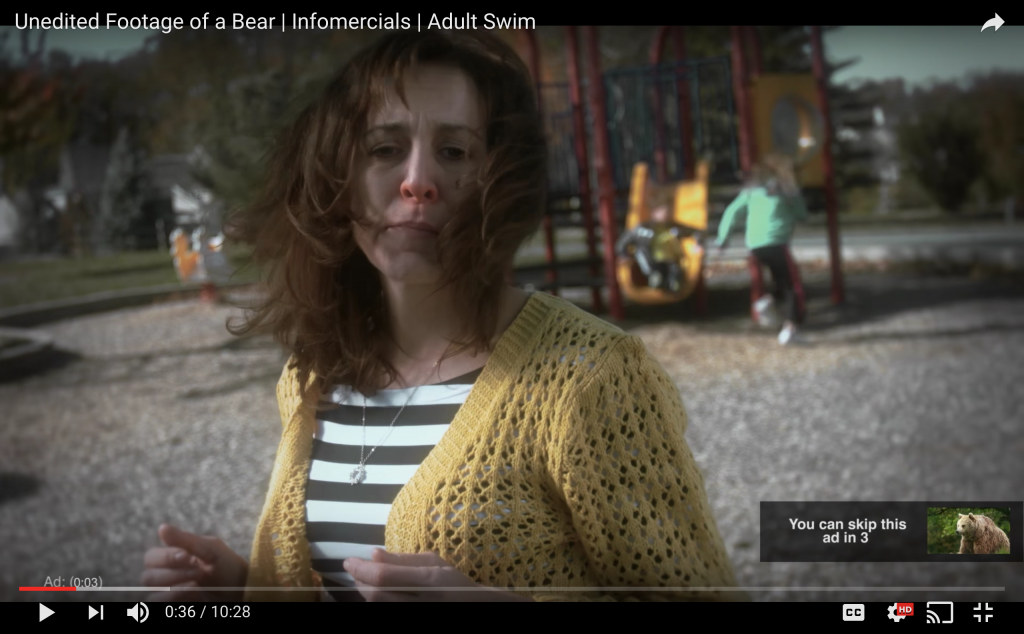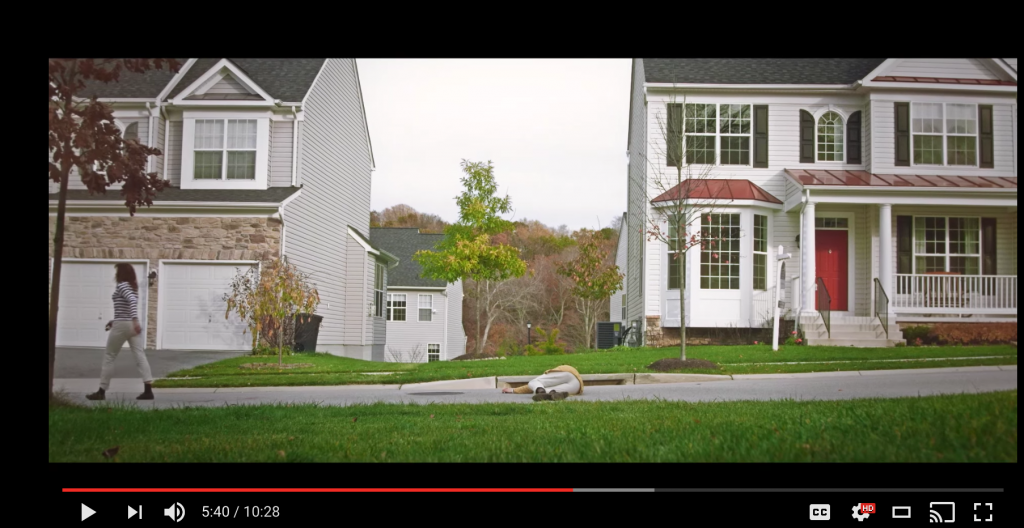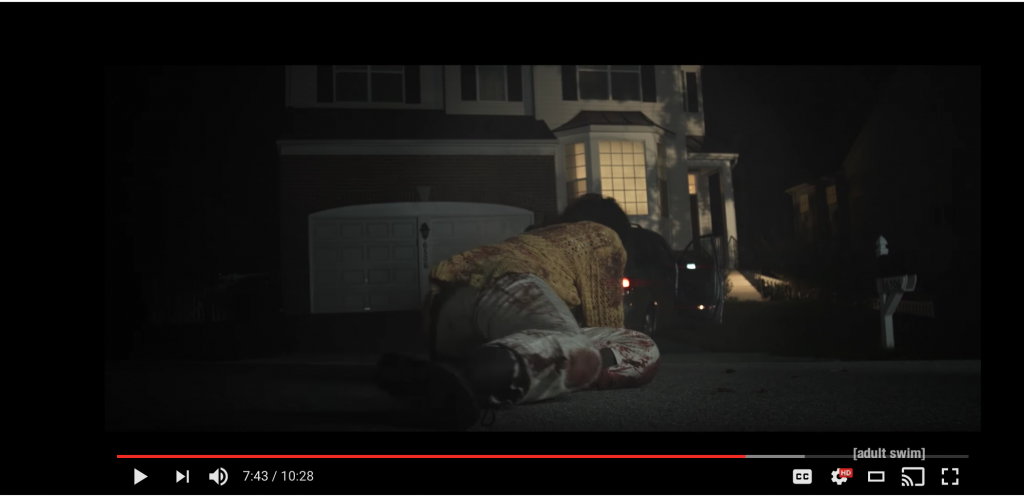A postmodern-horror-video-delivered-in-a-postmodern-medium sighting! Alan Resnick emerges!
Resnick is a video artist whose first YouTube creation was an uncanny video series on the tutorial genre. “alantutorial” oscillated between hilarious and disturbing as a high-pitched, odd character demonstrated how to eat a bag of chips or pick up a blue chair off the ground. His seemingly useless tutorials often escalated in unexpected and weird ways — like when he starts crying and throwing a tantrum when he can’t actually figure out how to pick up the blue chair off the ground.
Resnick proceeded to create short videos for Adult Swim; his combination of dark humor with uncanny horror became his signature. In “Unedited Footage of a Bear,” the frame opens on a literal bear. He is majestic, calm, and free. It’s the only moment of peace in a video that quickly devolves into chaos, panic, and violence.
But first, the footage fades into an ad. A mom sneezes and looks miserable as her kids beg to play — she happily pops a pill and get back to her regular life!

If you let the video continue to play, the mom gets into her car, smiling widely. She is still performing for the “commercial” as a cheerful female voice lists off a barrage of side effects in rapid succession. Slowly, as the voice fades, the mom’s facial performance drops. She drives back into her “real life,” looking exhausted as she rolls through her neighborhood.
Yes, that ad and that performance was a little postmodern Russian doll! This is media embedded in media, a video that sprawls beyond the typical YouTube format, an ad and a performance of an ad embedded into a larger narrative. If the viewer clicks “Skip Ad,” it actually directs them to a fake website for the drug the fake commercial was touting, Claridryl.
The rest of the video imagines the mental breakdown of this mom, as her Claridryl alter-ego — spun out on pharmaceuticals that triggered total darkness rather than enhanced health– hijacks her life. There is one scene where the mom is literally beaten and run over by this alter-ego, suggesting a total lapse of control.
This is reminiscent of the postmodern body horror we discussed in Paul Tremblay’s A Head Full of Ghosts. The horror is located in failure of the body to adhere to societal standards, an ambiguous loss of control and the tension between mental illness and demonic possession. This all appears the case in UFOAB as the alter-ego proceeds to ransack the mom’s house and threaten her children while the mother writhes on the ground outside the house, beaten and bloodied, able to witness the destruction but not get up or control it.


This postmodern narrative is set within an equally postmodern media format that combines nested video footage with an interactive website. As users click around on the Claridryl website, they will find surprising hidden “easter eggs.” For instance, you’ll notice a house in the background of the main banner image. If you click on the house, it draws it slowly into the foreground — and then it takes up the entire screen, but becomes an interactive, click-able image-scape. You can actually enter and explore the house as it appeared in the video in scenes where the alter-ego took over.

Linger on the main part of the website for too long, and it will slowly fade to grey…with a tiny GIF of the alter-ego perpetually running towards you.

Resnick achieves a totally creepy experience by layering his content and diversifying his mediums. The horror or Claridryl spans beyond the ten minute video; that horror builds and builds as you click through the nauseatingly designed website, as you find the house discover other uncanny imagery within it, as you are left with so many unanswered questions as blue and red police lights descended on the mom’s still bloodied body.



